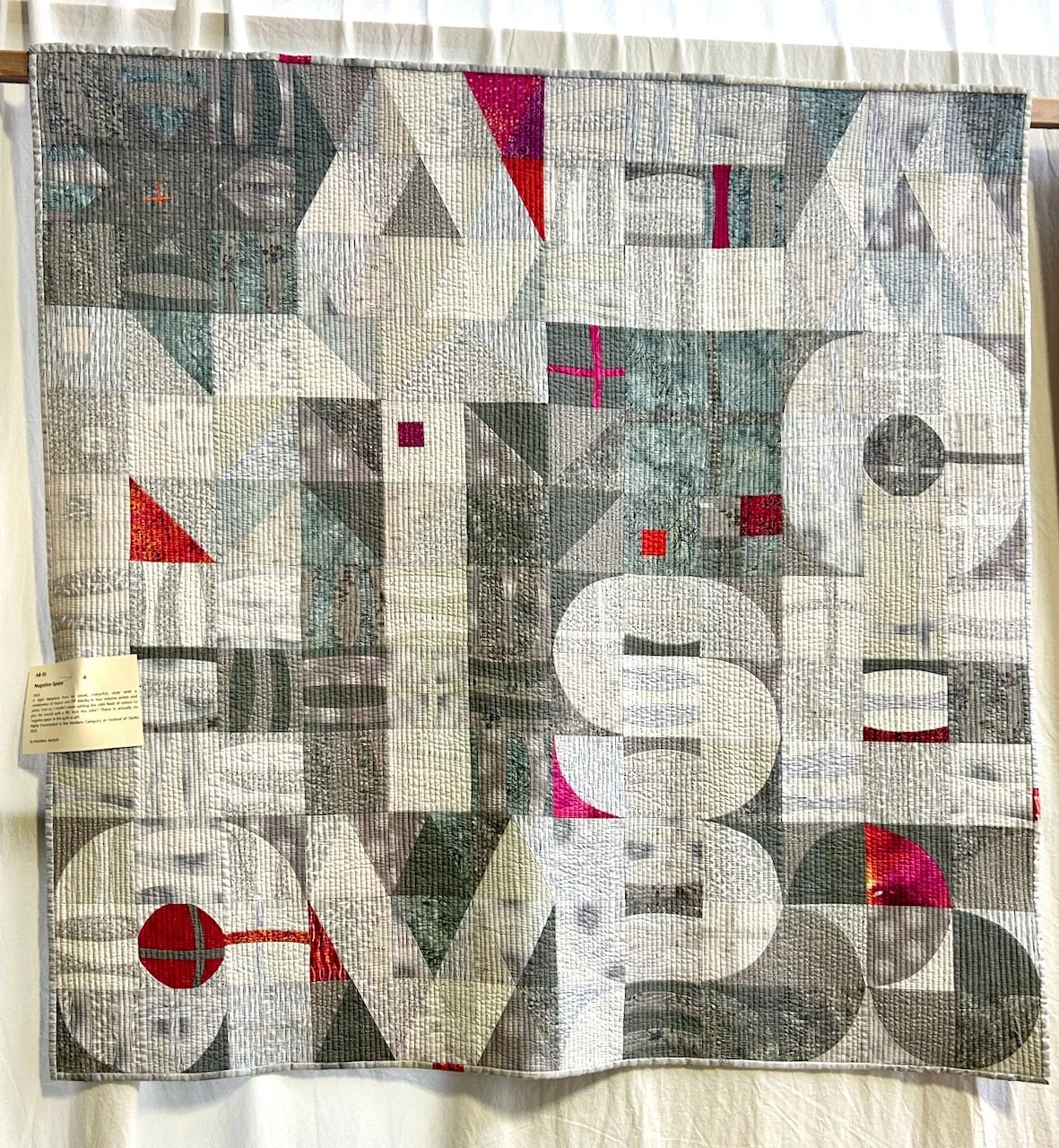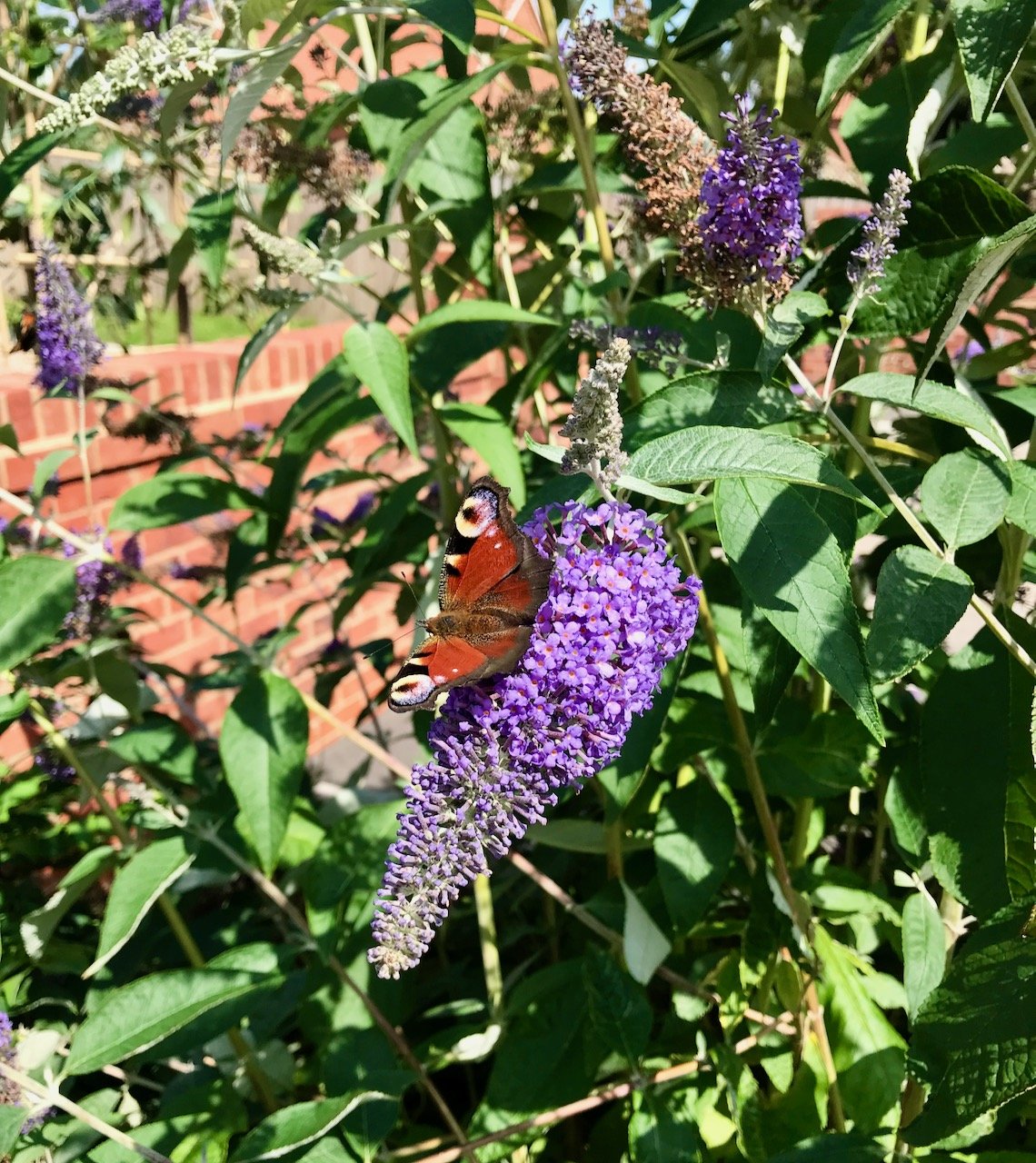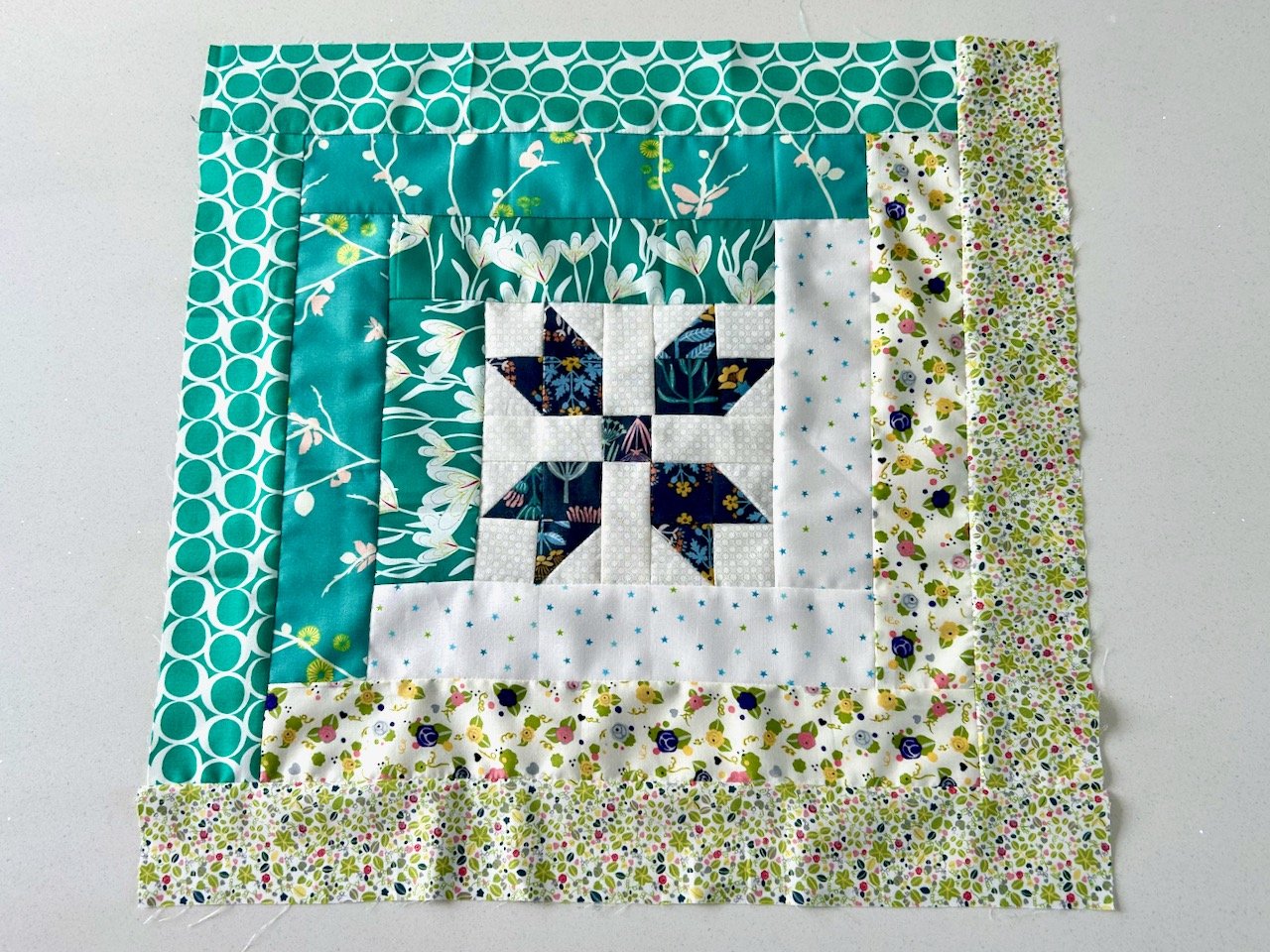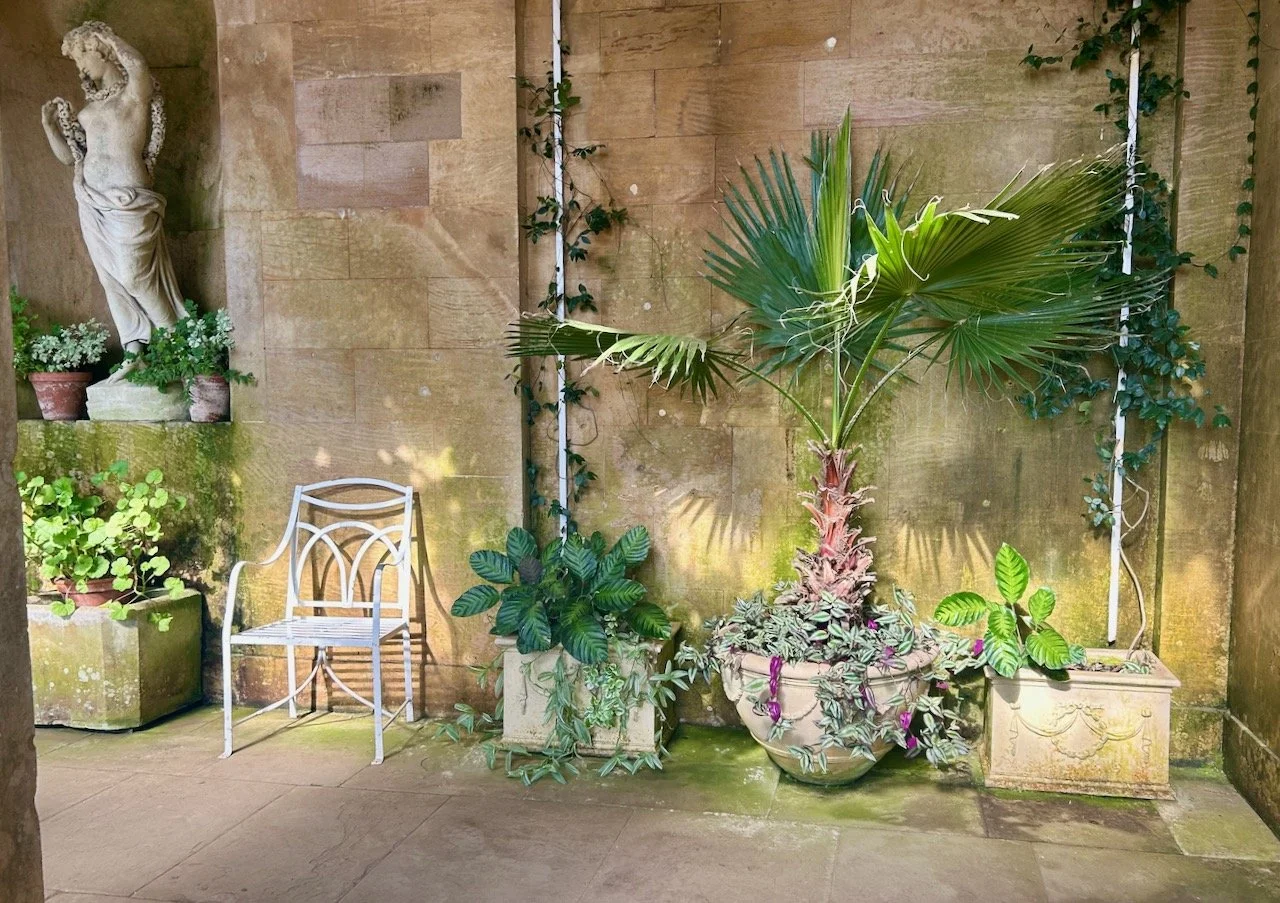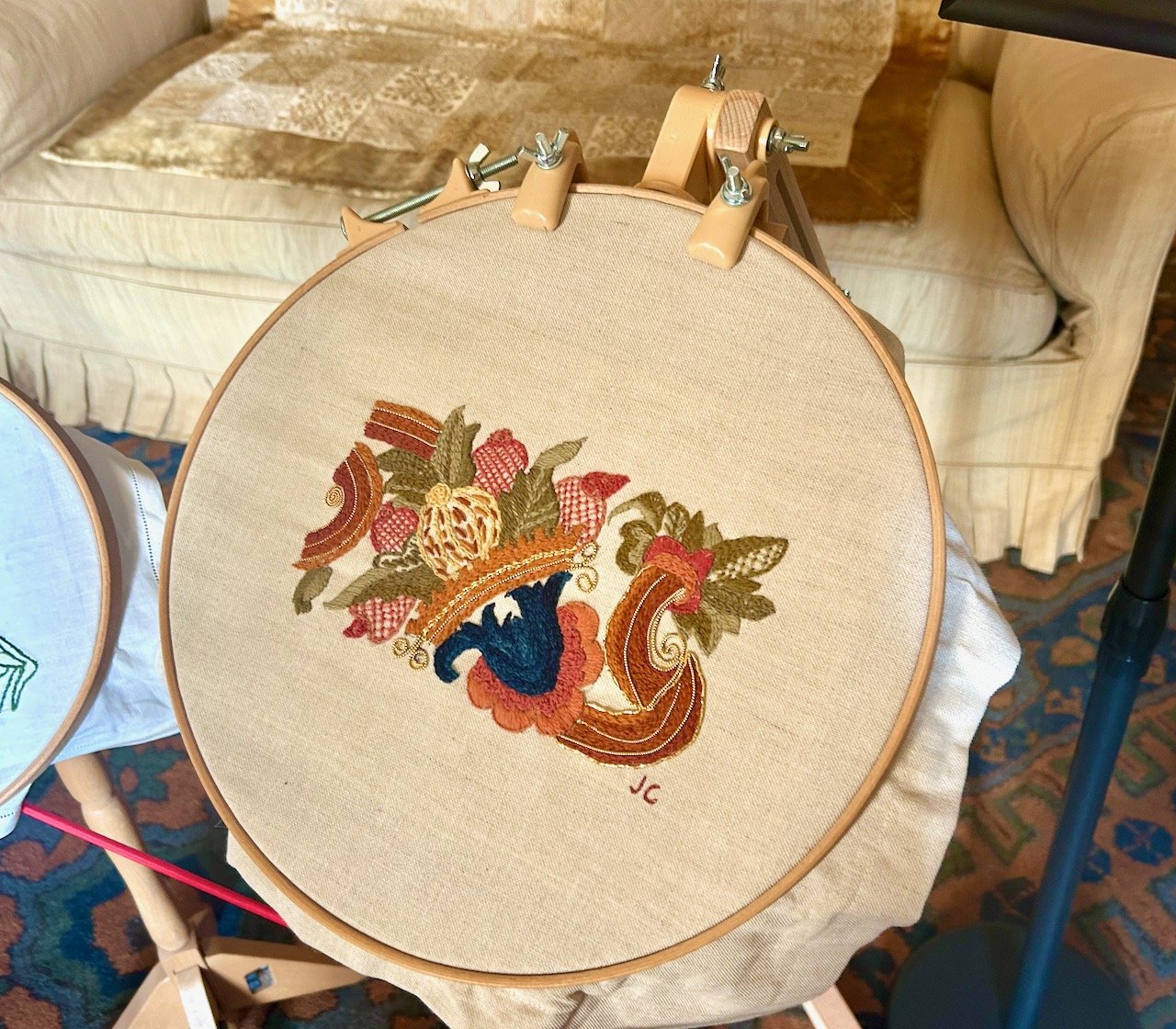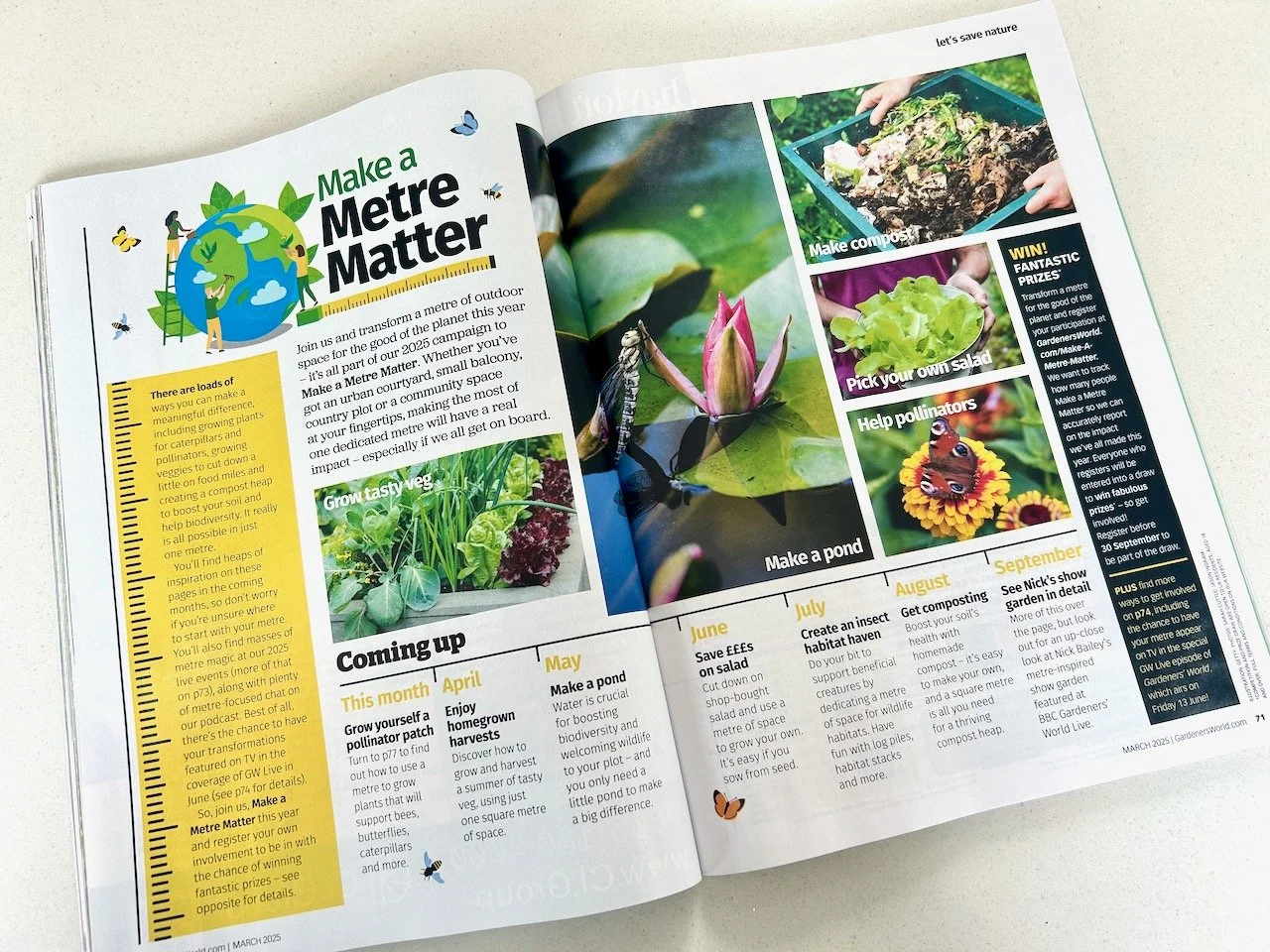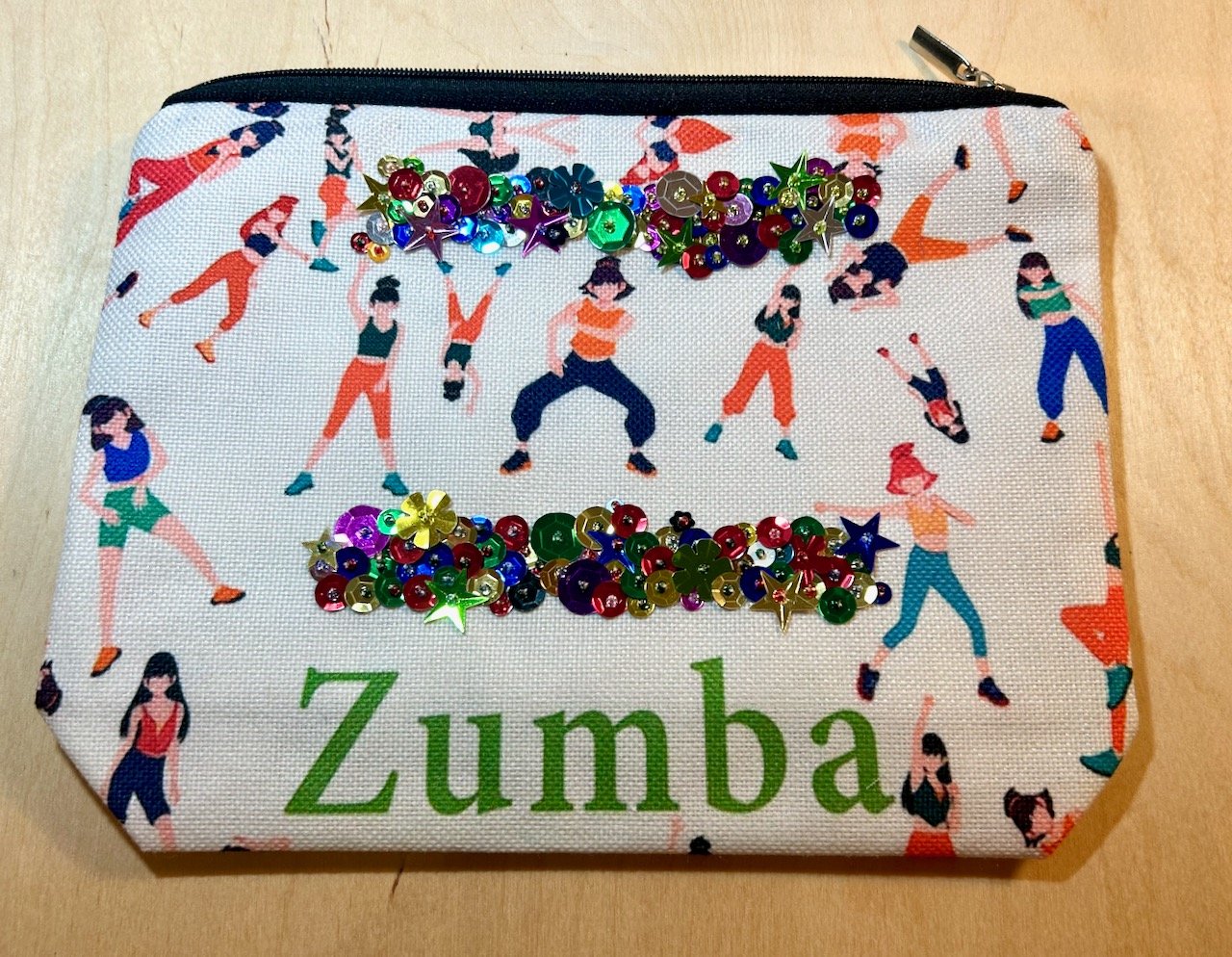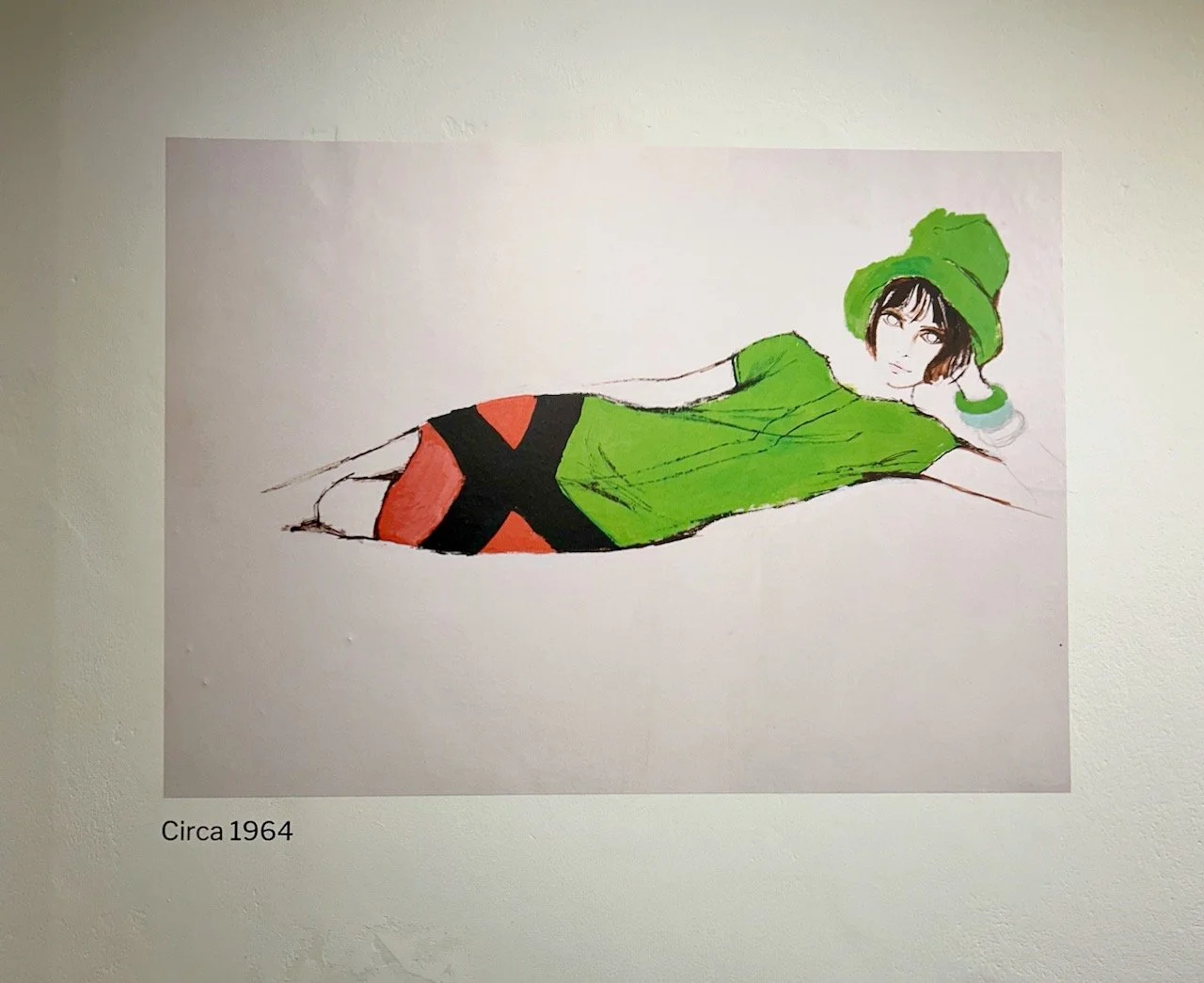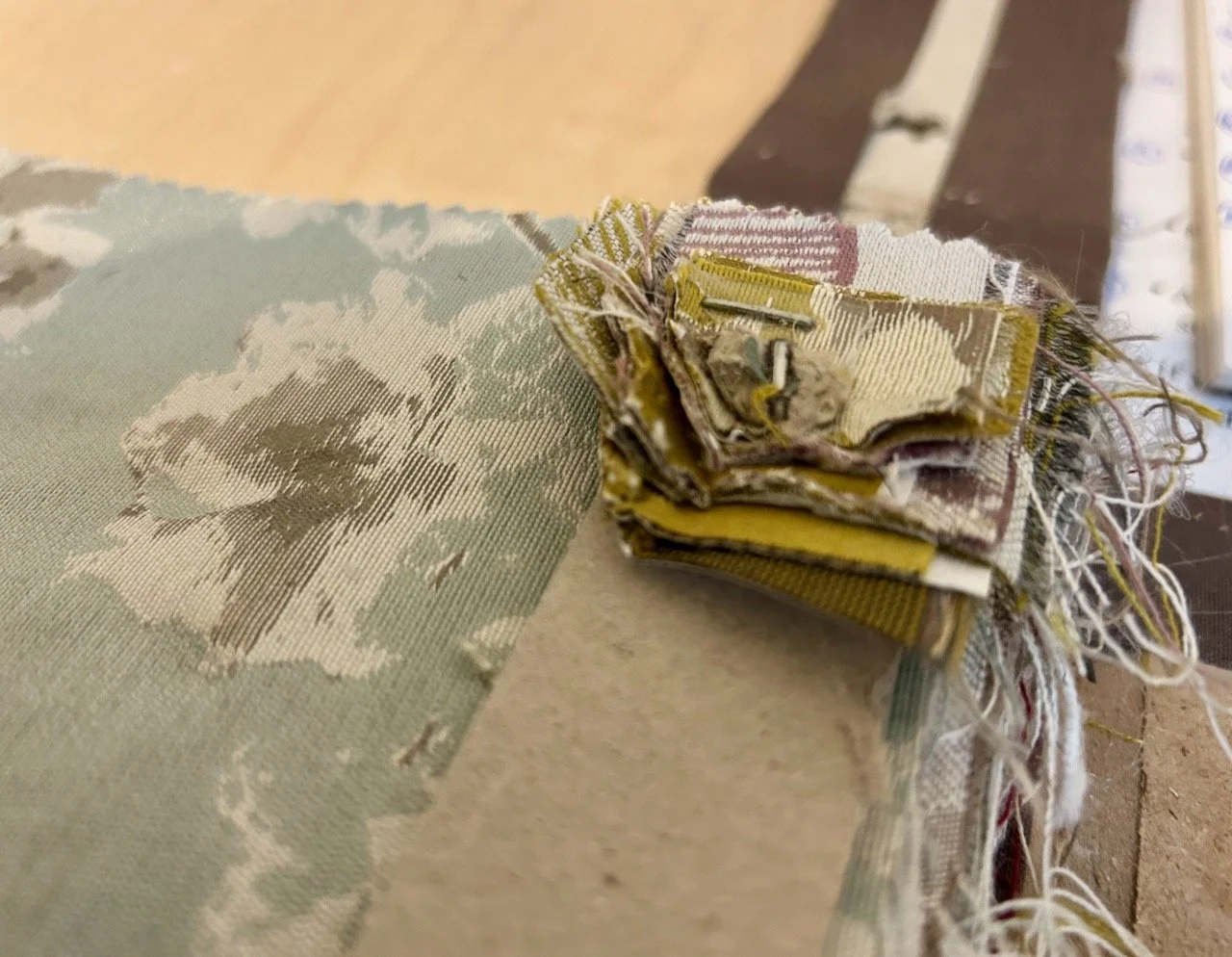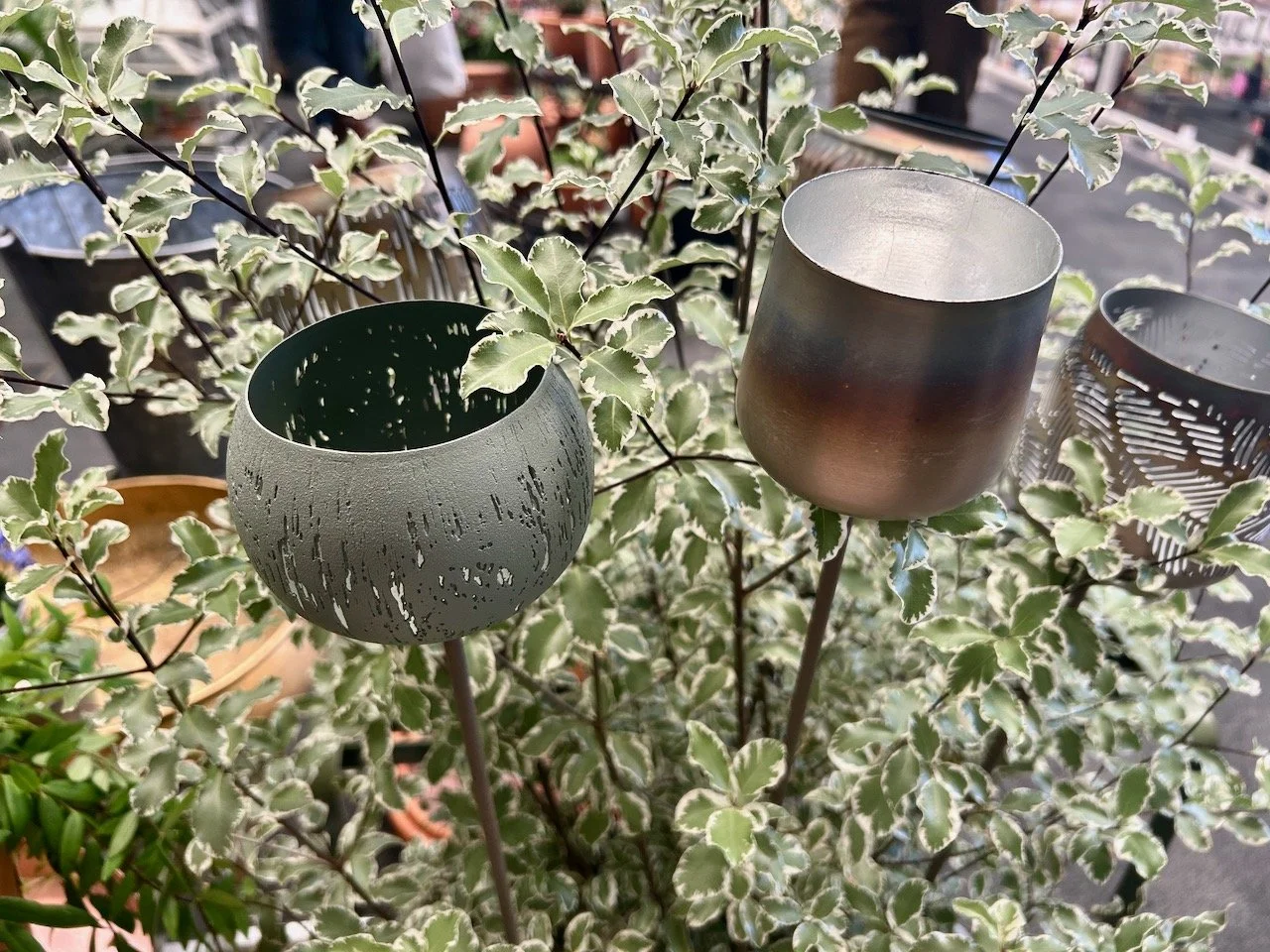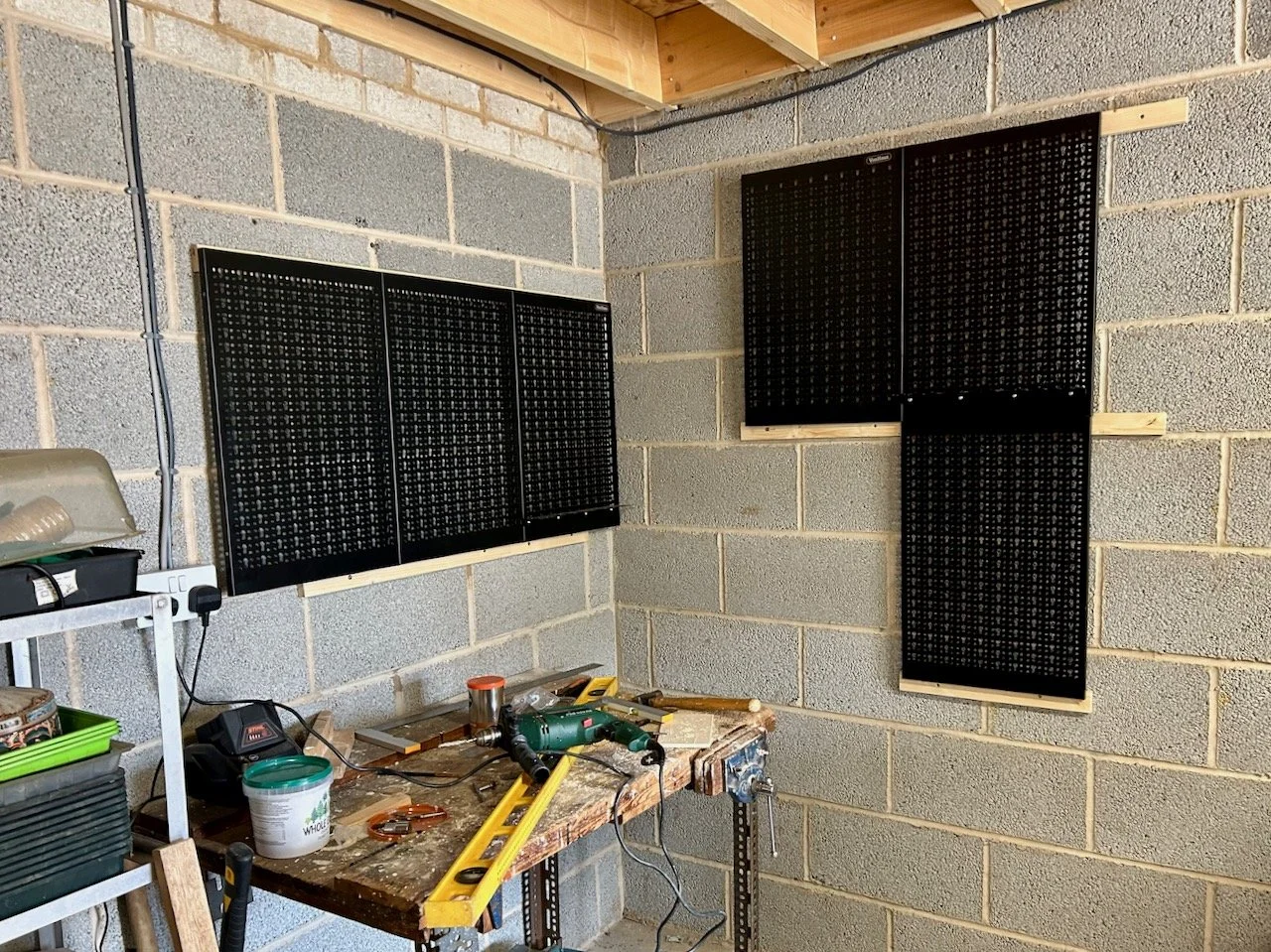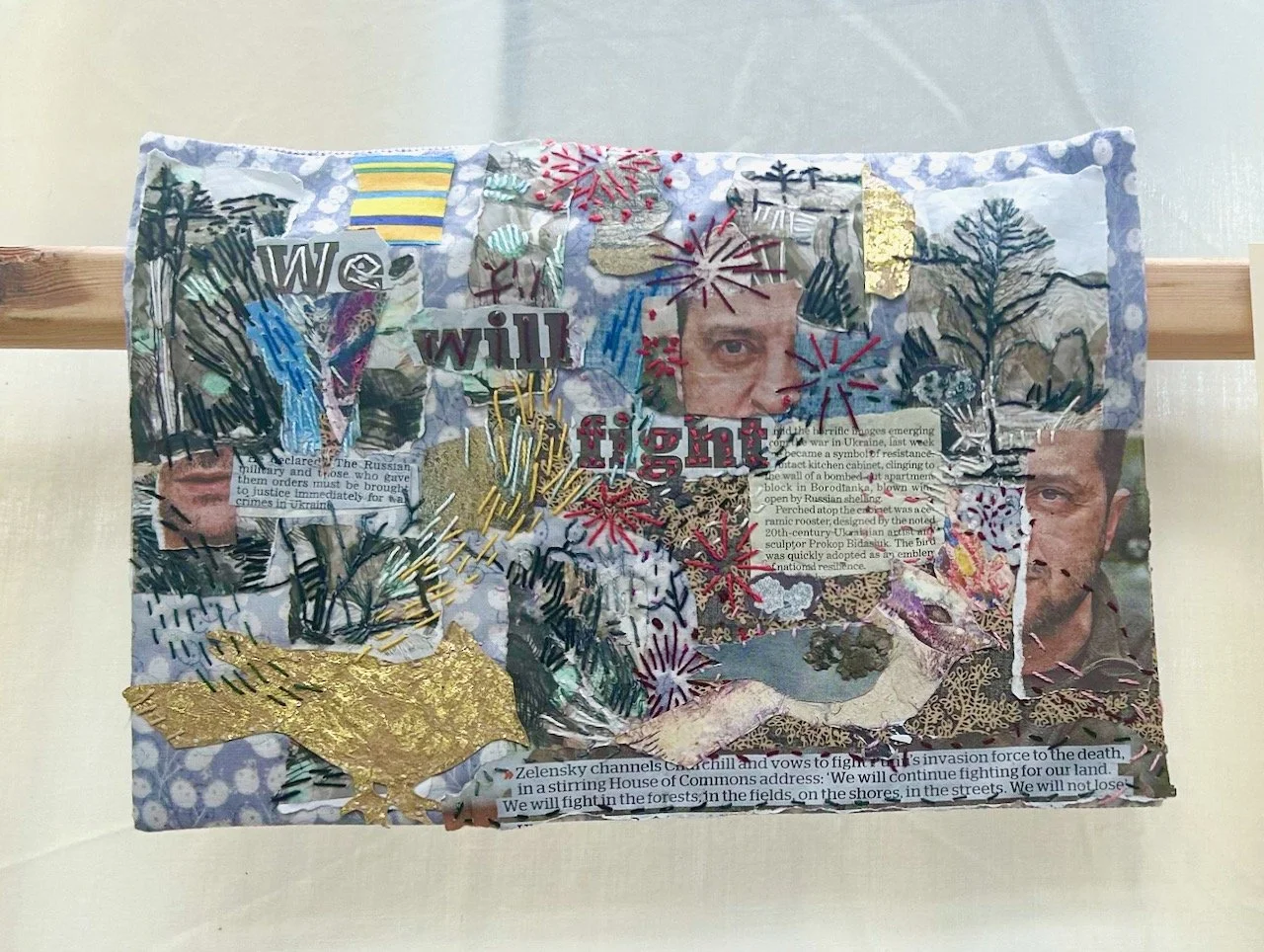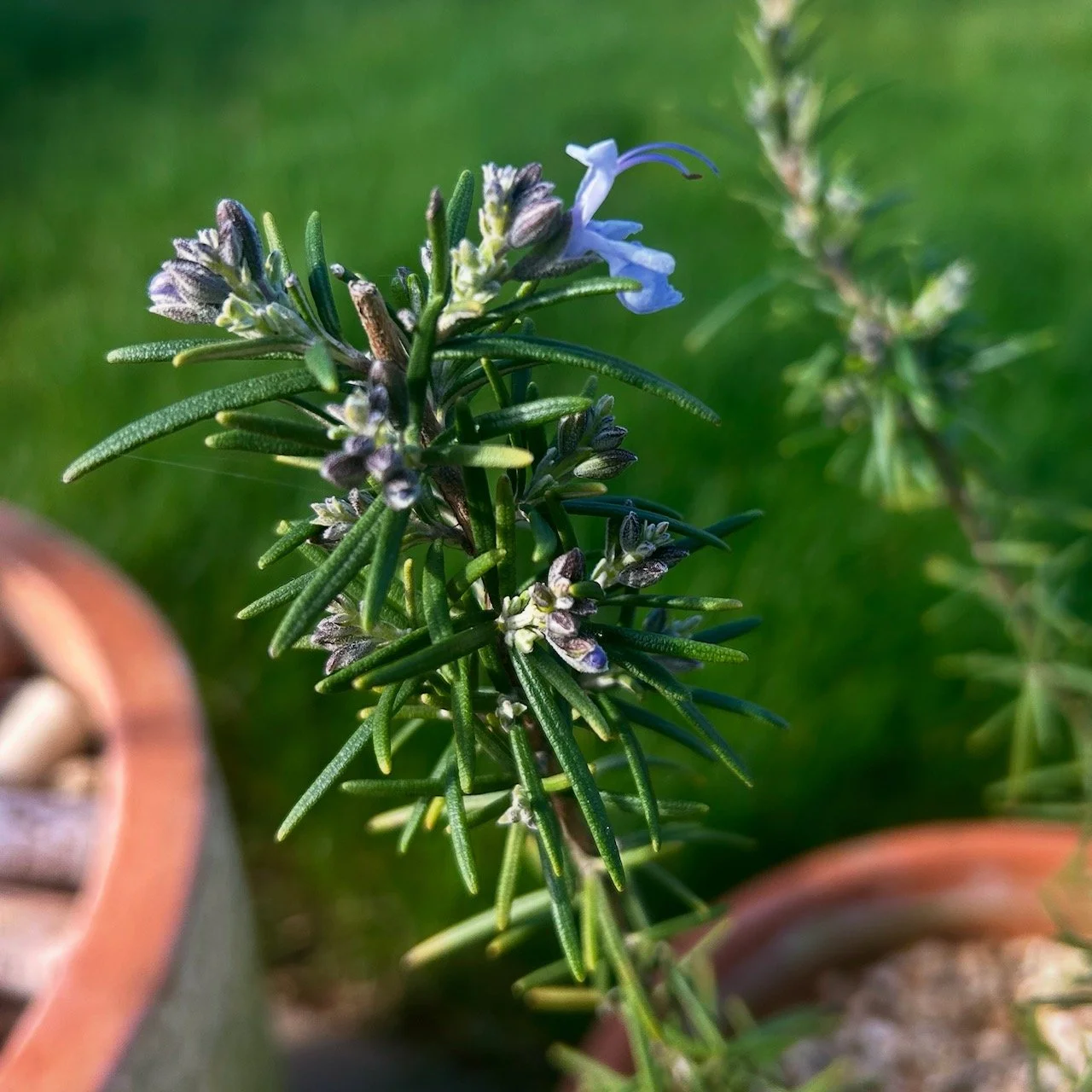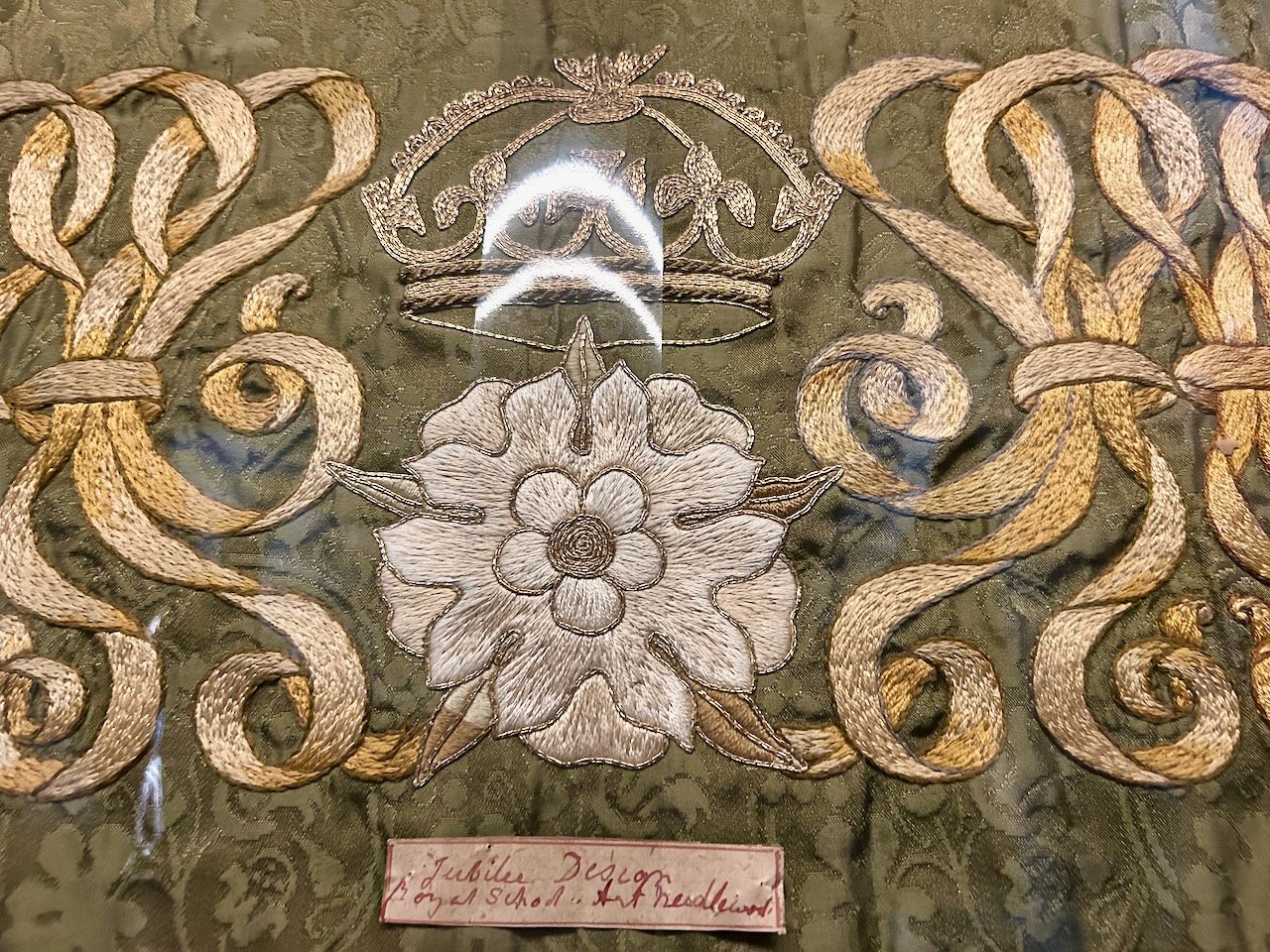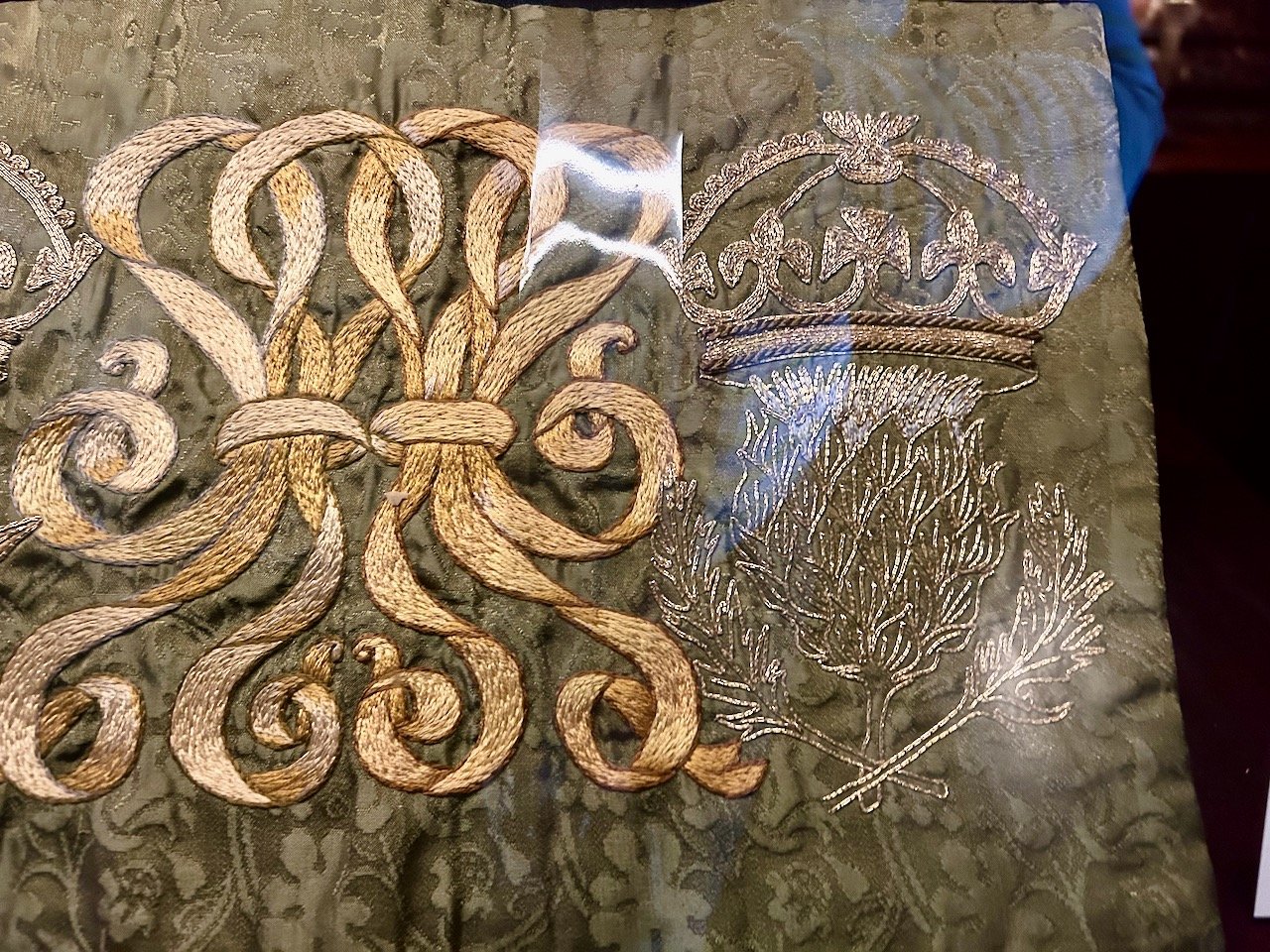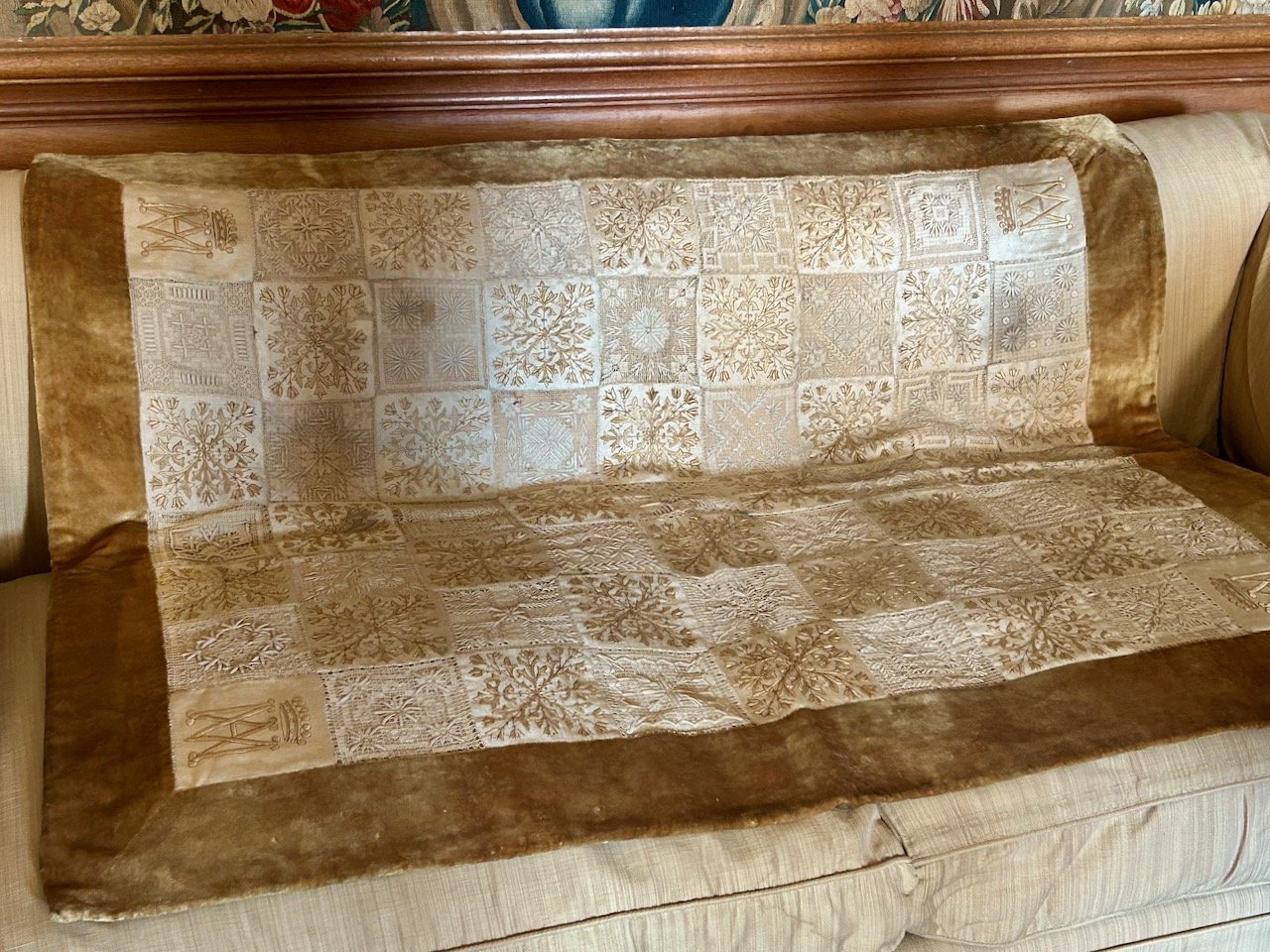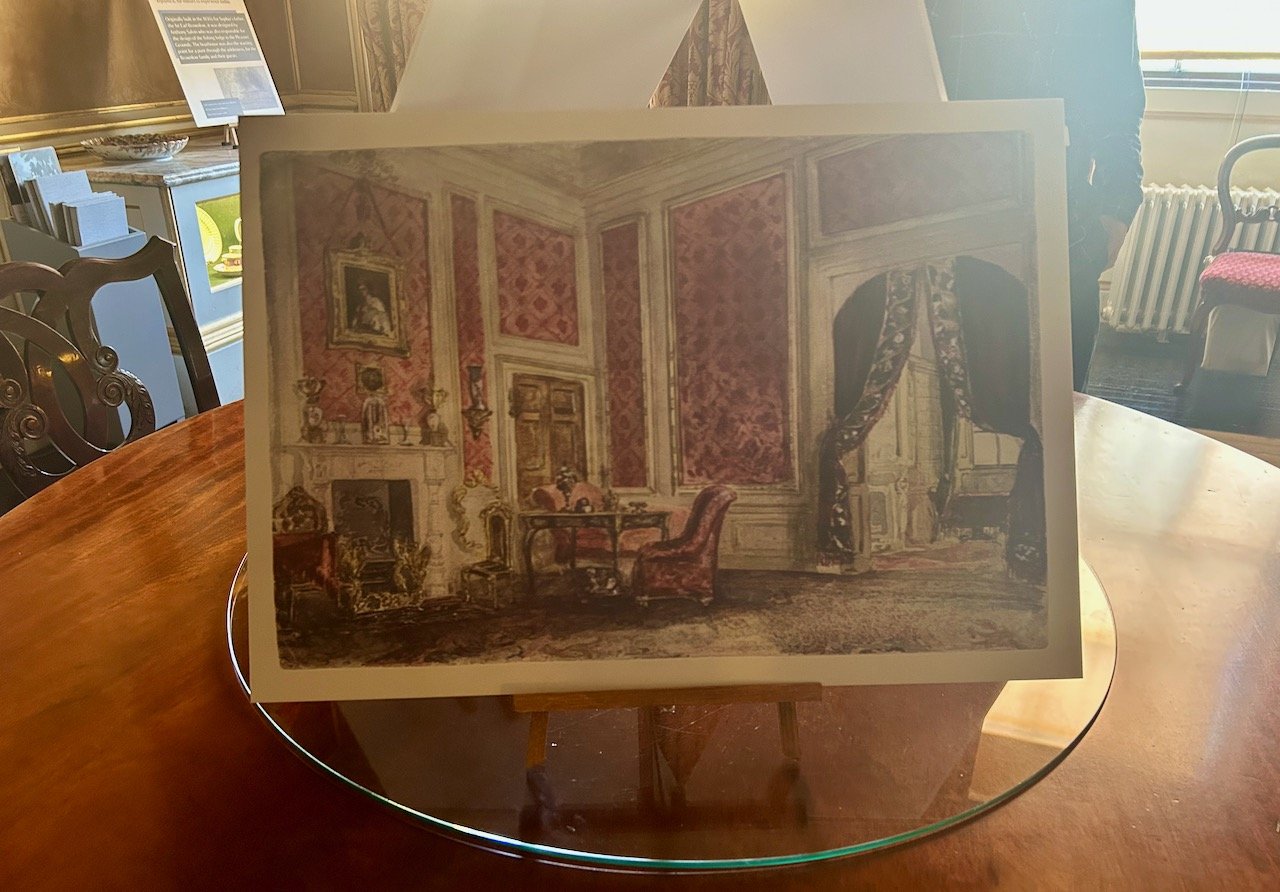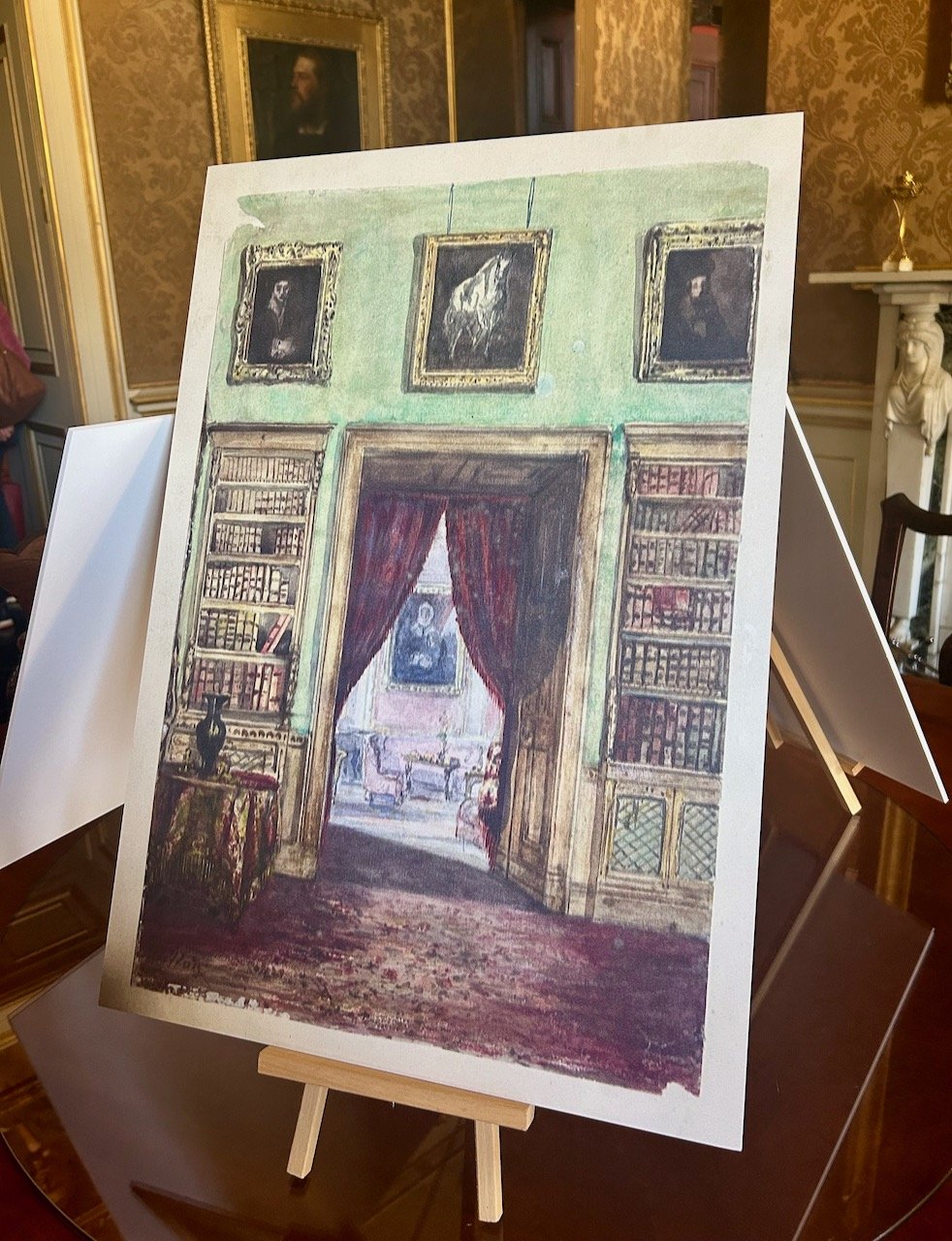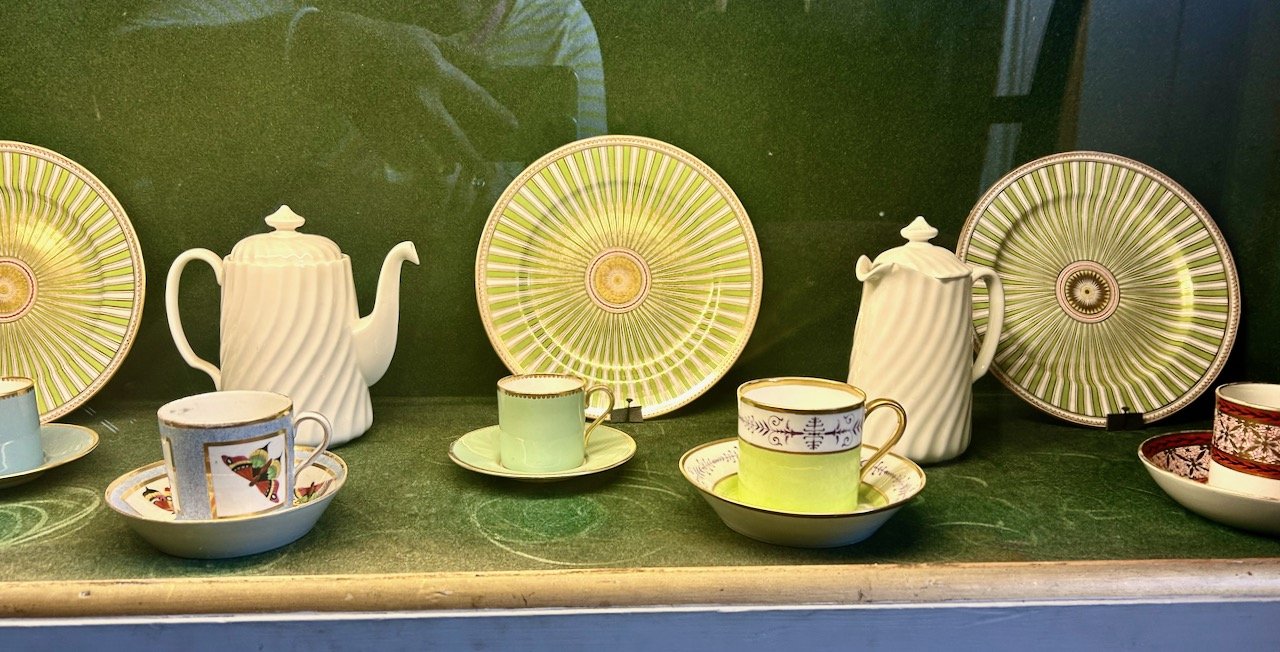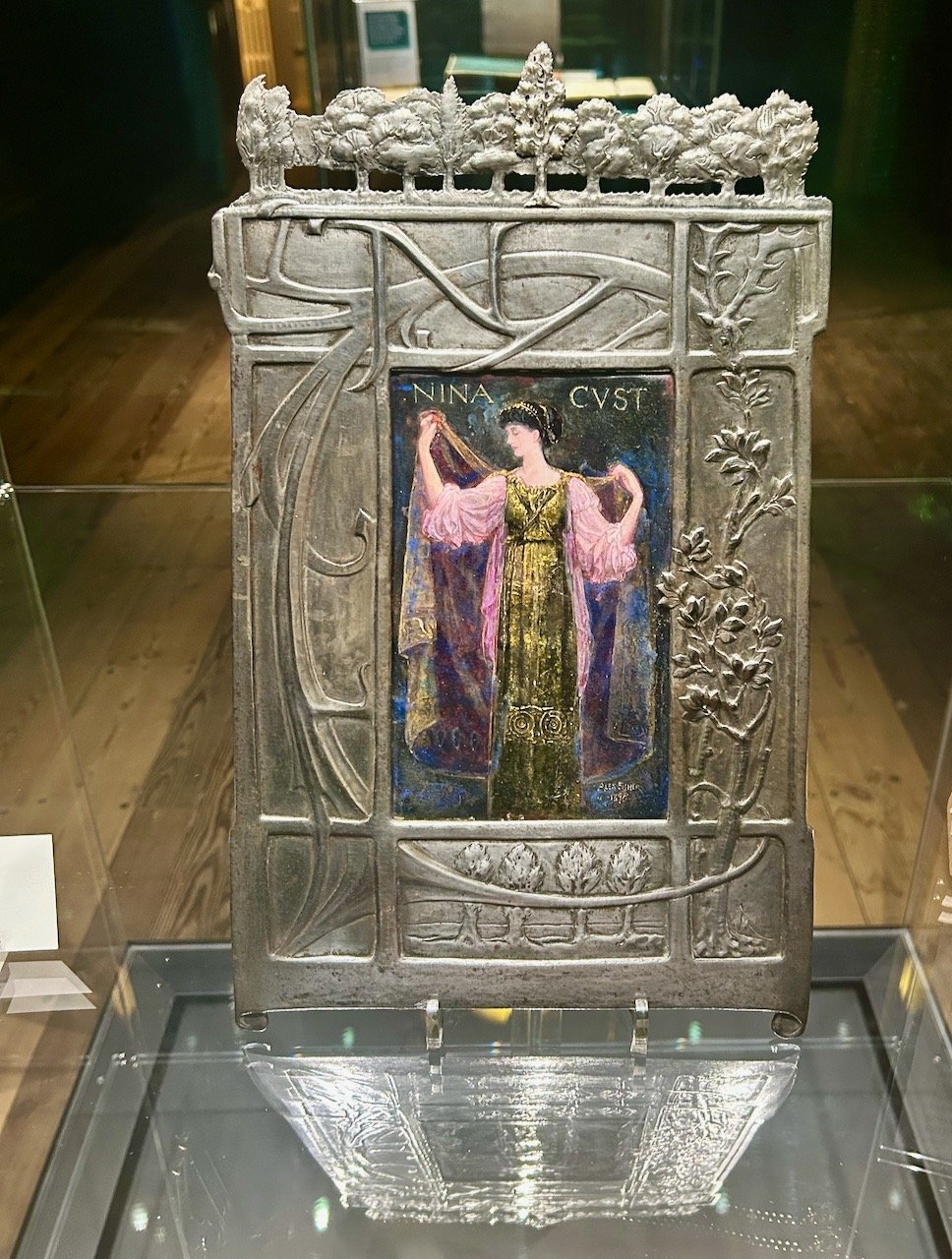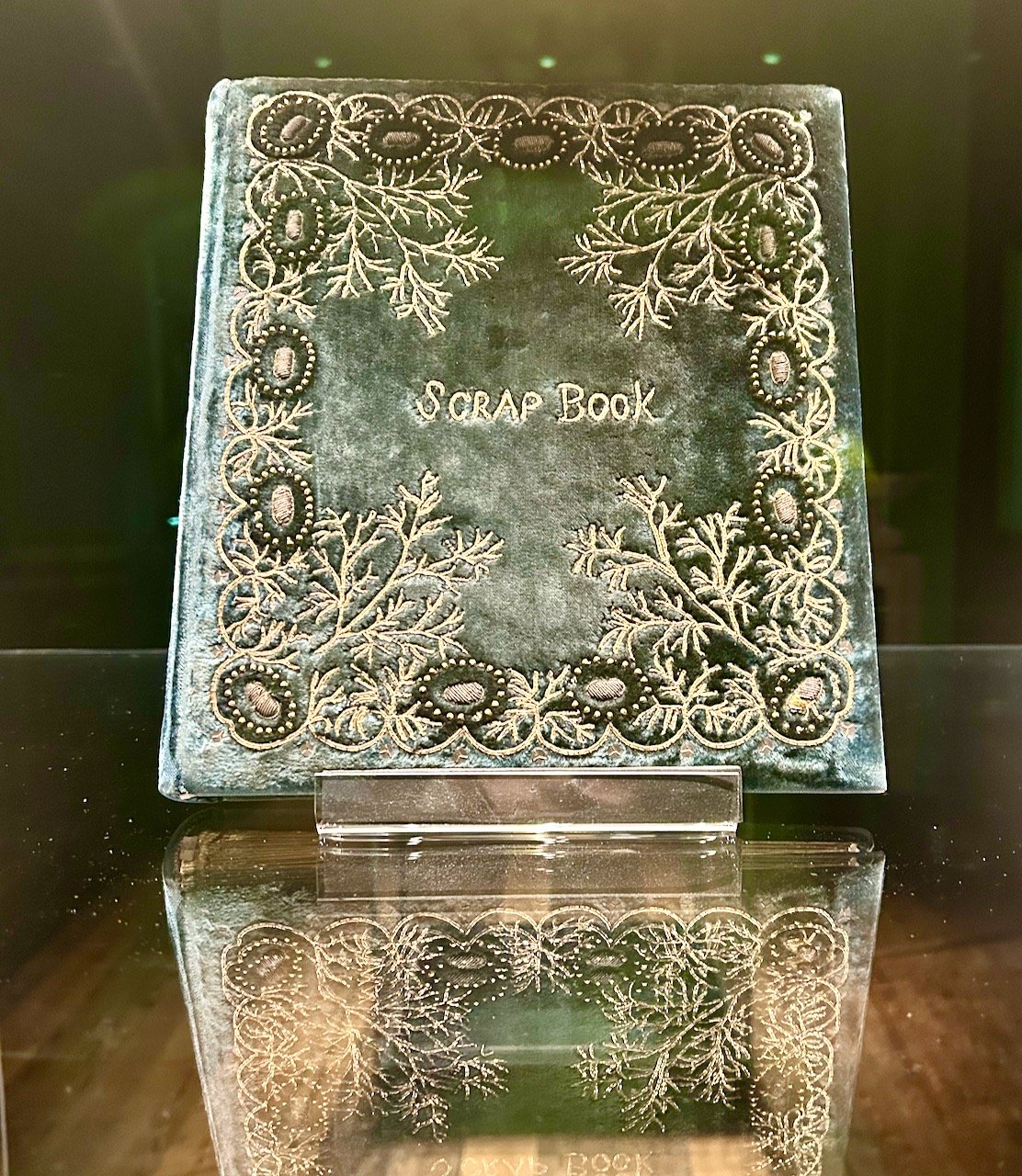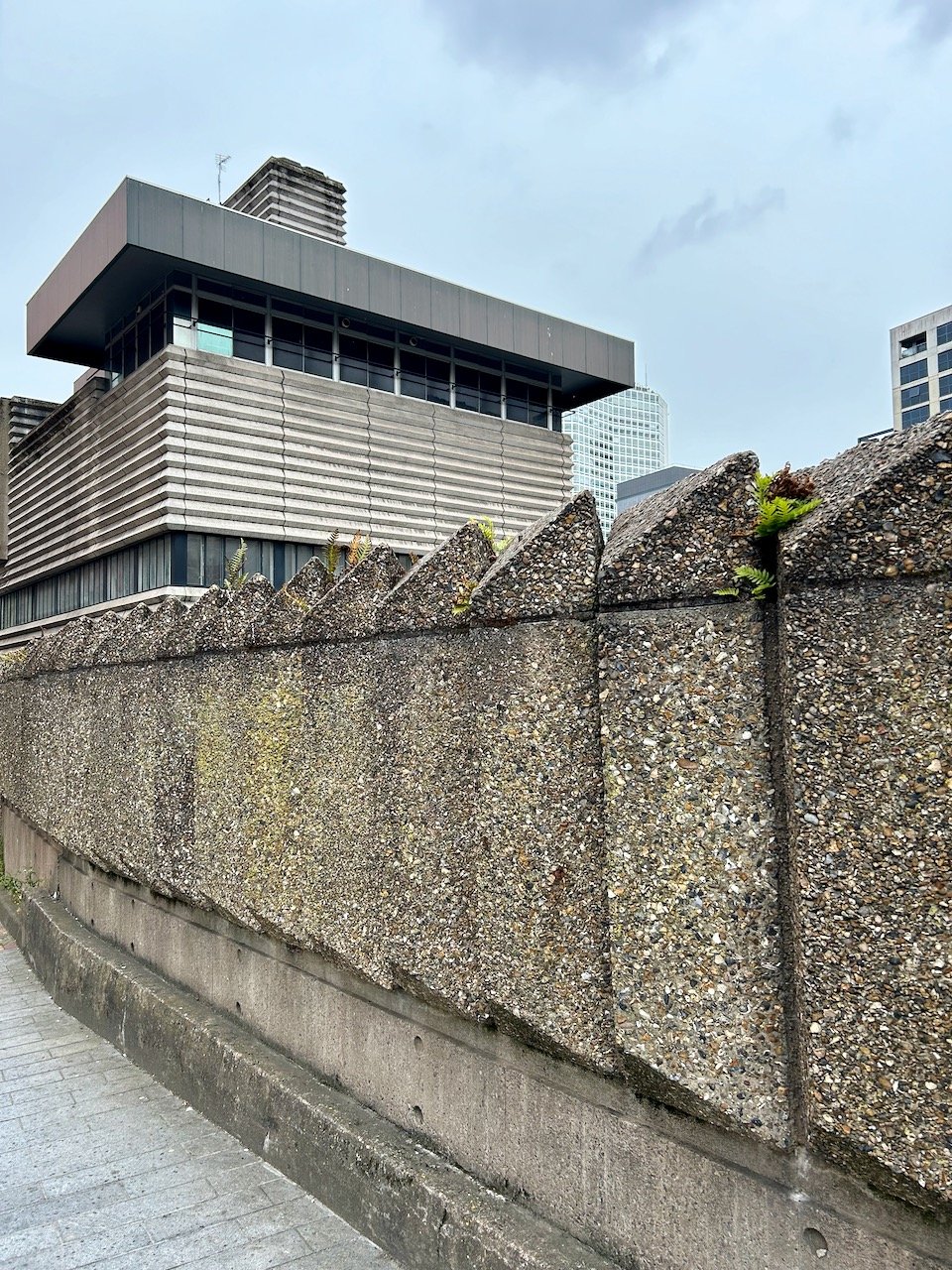The Belton Estate is one of the nearest National Trust properties to us, and it’s one we’ve visited a few times - even before we moved up here. The orangery is a favourite of mine, and on the times we’ve visited recently it hasn’t been open, but it was open when we visited last week on the Spring Equinox, but you’ll have to wait for an updated post on that as today I’m going to share more about a new exhibition that’s on in the house.
I first went in the house in the summer of 2021 and as with most things the post-Covid reawakening meant that only a limited number of rooms were available to view, something that I’d forgotten [about our visit] until I read it on my own post! This time though there was much more to see, and the post-Covid timing of my previous visit also explains why I didn’t remember any of the upstairs - I hadn’t been there before!
The exhibition - Artistic Journeys: Crafting a New Narrative - includes previously unseen items from the collection. which will be on display until at least until the house is redressed for Christmas, with exhibits changing regularly. The four artists are:
Elizabeth Cust (1776 - 1858) a skill oil painter inspired by ‘Old Masters’ to create her own.
Sophia Cust (1811 - 1882) who documented interior and exterior views of Belton using her favourite medium of watercolours.
Marian Alford (1817 - 1888) a skilled textile designer and artist who co-founded the Royal School of Needlework.
Nina Cust (1867 - 1955) a sculptor and poet, whose sculptures were displayed at the Royal Academy and who has published many works of poetry and fiction.
I’m not much of an oil painting fan I’m afraid, and have realised as I’ve been going through my photos, that I have none to share of Elizabeth’s work, and my photos of Nina’s work aren’t good enough to include either - so if you’re here for those, sorry - this isn’t the post for you.
Let’s start with Marian
Marian Alford’s connection to Belton was through her marriage to Viscount Alford, the eldest son of the first Earl Brownlow, and it was in 1984 that Lord Brownlow gave the house to the National Trust.
But Marian’s story took place many years before that. She was instrumental in bringing recognition to embroidery as an art form, and brought recognition to needlework as a respected form of employment for women in all social classes, raising the status of both at at time when seamstresses still worked in apalling conditions.
In 1872 she was one of the three founders of the School of Art Needlework and helped establish the school as a place for formal art education and training, which I think is all the more remarkable as she herself never received an art education, but who developed into a skilled artist and designer.
The embroidery below, along with the sketched pattern. was behind glass (hence the glare) as you entered the upstairs library. The detail of the stitches was amazing, and my favourite part was the thistle on the right hand end.
Downstairs in the Tapestry room there were more examples of her designs this time crafted by Belton volunteers, though as some patterns were incomplete these are creative interpretations of the designs, and no less stunning for that. The original hand-drawn and painted designs are now very fragile having been stored in folios for many years, and sadly can no longer be unfolded without causing damage.
Behind the embroidery hoops draped over a sofa was the most amazing throw - I wish I had more info on this, but I don’t and if it was there I missed it. But look at the detail - this one was carefully behind the ropes, but it’d be great to see this one slightly closer up. And I’d also like a pattern of the designs in the hoops above please!
Sophia’s watercolours
Sophia left Belton when she married, but often returned to her family home and during these visits she created a large collection of watercolours showing the house and gardens, many of which survive today. I particularly liked the three posters on display in the Breakfast room, which had previously been used as an ante-library (when the library was also downstairs) and then when the library moved upstairs a small dining room.
Her watercolours show how Belton looked in the mid 1800s, and is now a valuable resource for the conservation work in the property; they also show how the interior evolved over time with the placement of furniture, textiles and other objects in the rooms. So very much the photos of the day.
Another of her watercolours gave details of Belton’s boathouse which otherwise might have remained a mystery, and her detailed depiction made it possible to reinstate the boathouse, which was originally built in the 1830s. Amazing.
I was also quite taken with the breakfast crockery in the display case, which if you look closely enough at my reflection, you’ll see that I also managed unwittingly to match with my white and lime green striped top!
Two final pieces
Just before we left the house there were two final pieces that caught my eye. The first is this coloured enamel painting on copper, with an iron and silver Art Nouveau frame by the renowned Arts and Crafts enamellist Alexander Fisher of Nina Cust. It dates from 1898 and shows Nina wearing a gold and pink robe holding a cape, and it’s thought that this piece further acknowledged her status as an artist.
Isn’t it exquisite?
The second was this scrapbook - and quite honestly a scrapbook like I’ve not seen before. This was presented to Marian in 1886 as a Christmas gift from the School of Art Needlework. It’s covered in green velvet and embroidered with a gold, metal thread.
Both the house and the exhibition are worth seeing, so do go along if you’re close by or if you’re passing. As I said earlier it will be on for a while yet, and though the exhibits may change the ethos will remain. I’m looking forward to popping back and seeing how it changes, and seeing more detail on the things I’m sure I missed.
And I’ve still more to share, later this week look out for another visit to the Orangery, which now appears to be referred to at the Conservatory - and I think there’ll be another post to come on the ‘bedrooms at Belton’ and there’s some stunners there too!

